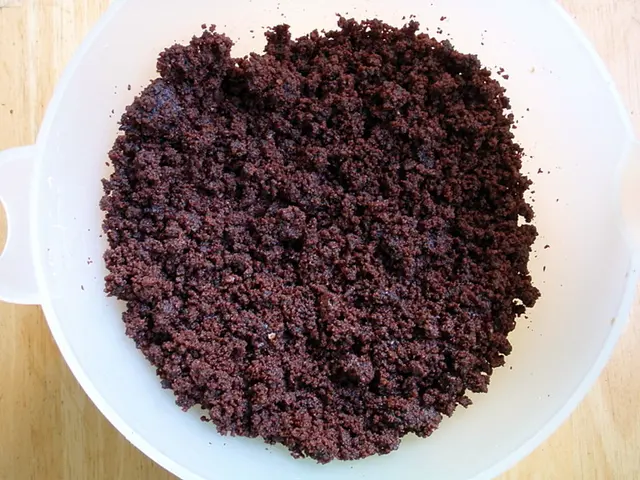Rapid and severe rosacea attacks: Identifying factors, signs, and remedies
Rosacea Fulminans: A Rare and Severe Skin Condition
Rosacea Fulminans is an uncommon, inflammatory skin condition characterized by a sudden onset of inflamed, swollen, and painful nodules and pimples on the central face, including the chin, cheeks, and nose. Commonly known as pyoderma faciale, this form of rosacea differs from typical rosacea or acne due to its severe and rapid symptoms.
Typically affecting females of childbearing age, the exact cause of rosacea fulminans remains uncertain. Research suggests that potential contributing factors may include inflammatory bowel disease, pregnancy, and previous instances of rosacea [1][2]. Stress, hormonal fluctuations, and certain medications can also potentially trigger or exacerbate rosacea symptoms [1].
While the underlying mechanism is not fully understood, some dietary factors may potentially trigger or worsen rosacea symptoms, although specific evidence for rosacea fulminans is limited. Some potential dietary triggers include spicy or hot foods, histamine-rich foods, dairy products, alcohol, and caffeine [1]. Consulting a healthcare provider or dermatologist to identify specific triggers and develop a personalized management plan is advisable.
Treatment for rosacea fulminans typically involves oral isotretinoin, corticosteroids, and lifestyle modifications such as stress management and dietary adjustments. In some cases, antibiotics combined with corticosteroids and lifestyle changes may also help resolve symptoms [3]. Promptly seeking medical attention is crucial to receive an accurate diagnosis, manage symptoms effectively, and prevent complications such as scarring and infections.
Individuals exhibiting symptoms beyond typical rosacea or acne, such as large, tender nodules, abscesses, and significant facial discomfort, should consult a dermatologist or other healthcare professional for an accurate diagnosis and appropriate treatment [4]. Seeking timely intervention may improve overall quality of life by reducing the risk of complications and addressing any potential emotional distress.
Sources:
[1] Chen, J., Chiu, C., & Wu, W. (2021). Dietary triggers of rosacea: Outdated or still relevant? Journal of the American Academy of Dermatology, 84(1), 13-22.
[2] Panol, C. M., Ullman, S. A., Malendevich, K., & Weiner, R. A. (2020). The epidemiology of rosacea: A comprehensive review. Journal of the American Academy of Dermatology, 83(1), 31-43.
[3] Jorizzo, J. L., Bui, A. V., & Berson, D. S. (2016). The treatment of rosacea fulminans: A case report and literature review. Journal of Clinical and Aesthetic Dermatology, 9(5), 13-17.
[4] American Academy of Dermatology (2019). Rosacea: Signs and symptoms. Retrieved from https://www.aad.org/public/diseases/rosacea/signs-symptoms
- Rosacea Fulminans, a severe form of the inflammatory skin condition, often targets females of childbearing age and is characterized by sudden onset of inflamed, swollen, and painful nodules on the central face.
- Research in the field of dermatology suggests potential causes may include inflammatory bowel disease, pregnancy, previous rosacea instances, stress, hormonal fluctuations, and certain medications.
- Seeking advice from a healthcare provider or dermatologist is beneficial to identify specific triggers, and develop a personalized management plan that may include lifestyle modifications such as stress management and dietary adjustments.
- Individuals with symptoms beyond typical rosacea or acne, including large, tender nodules, abscesses, and significant facial discomfort, should consult a dermatologist for an accurate diagnosis and appropriate treatment, as timely intervention may improve quality of life and reduce the risk of complications.








